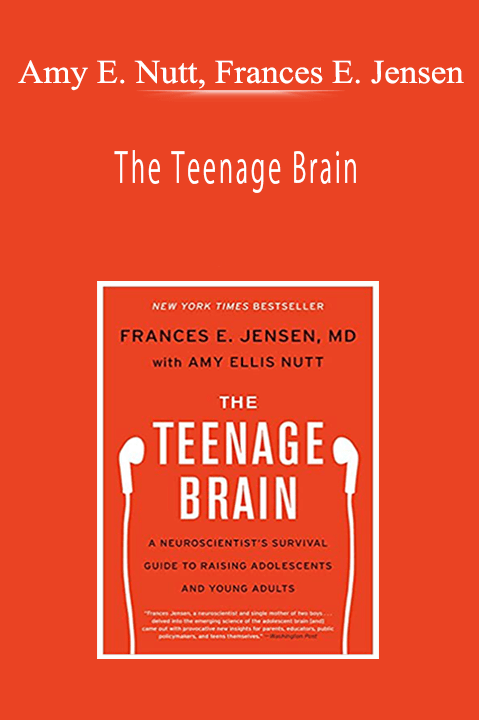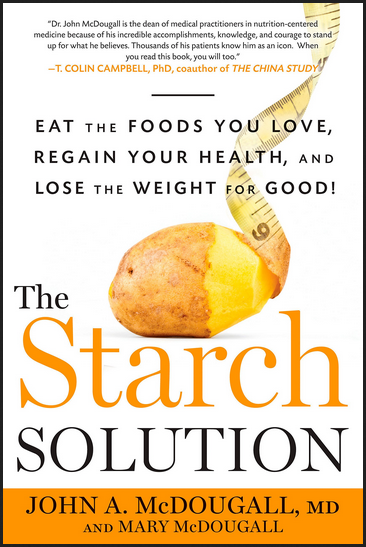John McDougal & Mary McDougal – The Starch Solution
REVIEW
“Dr. John McDougall is the dean of medical practitioners in nutrition-centered medicine because of his incredible accomplishments, knowledge, and courage to stand up for what he believes. Thousands of his patients know him as an icon. When you read this book, you will too.” —T. Colin Campbell, PhD, coauthor of The China Study
ABOUT THE AUTHOR
JOHN A. McDOUGALL, MD, has co-authored many bestselling books with his wife, Mary, and is featured in the documentary and book Forks Over Knives. He cares for patients and teaches medical doctors and students at the McDougall Live-In Program in Santa Rosa, CA.
EXCERPT. © REPRINTED BY PERMISSION. ALL RIGHTS RESERVED.
PART I
HEALING WITH STARCH
CHAPTER 1
Starch: The Traditional Diet of People
Have you had your rice today?
This Chinese greeting—the equivalent of our how are you?—reminds us that, for the Chinese, whether you’ve eaten rice is the ultimate measure of well-being. Rice is that essential to the Chinese diet. Throughout most of Asia, the average person eats rice two to three times daily. Rice is also an important food in the Middle East, Latin America, Italy, and the West Indies. After corn it is the second most produced food worldwide, and the world’s single most important source of energy, providing more than 20 percent of calories consumed by humans around the globe.
In China, the word for rice and food are one and the same. Likewise, in Japan the word for cooked rice also means “meal.” Buddhists refer to grains of rice as “little Buddhas,” while in Thailand the call that brings the family to the table is “Eat rice.” In India, the first food a new bride offers her husband is not cake but rice. It is also the first solid food that will be offered to her baby.
The story is the same the world over. Whether rice in Asia, potatoes in South America, corn in Central America, wheat in Europe, or beans, millet, sweet potatoes, and barley around the globe, starch has been at the center of food and nutrition throughout human history.
What Is Starch?
Plants use water, carbon dioxide, and energy from the sun to form simple sugars through a process called photosynthesis. The most basic carbohydrate is the simple sugar glucose. Inside the plant’s cells, simple sugars are linked into chains, some of them arranged in a straight line (amylose) and others in many branches (amylopectin). When these sugar chains gather in large quantities inside a plant’s cells, they form starch grains, also called starch granules (amyloplasts).
Plants store in their roots, stems, leaves, flowers, seeds, and fruits the starch they produce. The stored starch provides them with a source of energy when they need it later, keeping them alive through the winter and fueling their reproduction the following spring. It’s what makes starchy vegetables, legumes, and grains so healthy to eat: Their high concentration of carbohydrates not only sustains the plants but also provides the energy needed to sustain human life.
Starch should be our primary source of digestible carbohydrate. The enzyme amylase in our saliva and intestine breaks down the long carbohydrate chains, turning them back into simple sugars. Digestion is a slow process that gradually releases these simple sugars from the small intestine into the bloodstream, providing our cells with a ready supply of energy.
Fruits offer quick-burning energy mostly in the form of simple sugars, but little of that slow-burning, sustaining starch. As a result, fruits alone won’t satisfy our appetites for very long. Green, yellow, and orange nonstarchy perishable vegetables contain only small quantities of starch. Their most important role is to contribute flavor, texture, color, and aroma to your starch-based meals. They offer a bonus in the additional nutrients (such as vitamin A and C) that come along for the ride.
Why then, here in the states and increasingly around the world, as all populations undergo economic development, have we become so afraid and ashamed of this most elemental food? And what price are we paying for shunning the most basic dietary staple known to humankind?
STARCH IS THE KEY INGREDIENT
Diet and nutrition advice is often focused on how much we ought to eat, and misses the point: More important than how much, how often, and when we eat is what we eat. Different kinds of animals require different types of diets. We humans are built to thrive on starch. The more rice, corn, potatoes, sweet potatoes, and beans we eat, the trimmer, more energetic, and healthier we become.
Starch? Really? Isn’t that for laundry? Yes, but it’s also the key to optimum health and satiety. We hear a lot about carbohydrates and whether or not we should eat them, but we don’t hear enough about the most valuable type of carbohydrate, starch.
There are three basic types of carbohydrates—sugar, cellulose, and starch—each made up of carbon, hydrogen, and oxygen in specific configurations. The simplest of these—sugar—includes sucrose (the granulated sugar you bake into cookies), fructose (which makes fruit taste sweet), lactose (found in milk), and glucose (the simple sugar that comes together in chains to make cellulose and starch). Sugar provides quick and powerful energy because it is so efficiently broken down in the body. (You’ll learn more about sugar in Chapter 12.)
The second type of carbohydrate, cellulose, is made up of chains of glucose bonded together by indigestible linkages. It is found in the cell walls of plants and in wood and other organic matter. Our digestive system doesn’t have the enzymes to break down cellulose to use it for fuel, but termites do, which is why they can eat through the wood beams of your home. Although we get no energy from them, indigestible carbohydrates like cellulose are valuable to us for their dietary fiber.
The gold medal for the carbohydrate most beneficial to humans goes to starch. Like cellulose, starches are made up of long-branching chains of glucose molecules. Starch is valuable to us because we can break it down into simple sugars that provide us with sustained energy and keep us feeling full and satisfied. Starchy foods are plants that are high in long-chain digestible carbohydrates—commonly referred to as complex carbohydrates. Examples include grains like wheat, barley, rye, corn, and oats; starchy vegetables like winter squash, potatoes, and sweet potatoes; and legumes like brown lentils, green peas, and red kidney beans. Starch is so important that an international scientific journal—Starch—is dedicated to its study. Starch is at the core of my health-enhancing diet. If you take away just one message from this book, it should be: Eat more starch. Basic to our human nature is the scientific fact that we are, and have always been, primarily starch eaters. According to the world-renowned anthropologist from Dartmouth College, Nathaniel Dominy, PhD, “A majority of calories for most hunter-gatherer societies came from plant-foods, not animal-foods, thus humans might be more appropriately described as ‘starchivores.’” Think of yourself as a starchivore, like a cat is a carnivore and a horse is an herbivore.
You’ve probably heard about the benefits of a plant-based diet—one that reduces or eliminates animal foods like meat, dairy, and eggs. This concept does not go far enough. Without the addition of starch, a diet of low- calorie leafy greens like lettuce and kale, crucifers like broccoli and cauliflower, and fruits like apples and oranges will leave you feeling hungry and fatigued. Nonstarchy green, yellow, and orange vegetables are good for you to eat, but on their own do not give you enough calories to sustain your daily activities and keep you feeling satisfied. Your natural hunger drive may lead you to fill up on something else at the expense of your weight and health.
McDougall’s Classification of Common Foods
Starches
Grains: Barley, buckwheat, corn, millet, oats, rice, rye, sorghum, wheat, wild rice
Legumes: Beans, lentils, peas
Starchy Vegetables: Carrots, Jerusalem artichokes, parsnips, potatoes, salsify, sweet potatoes, winter squashes (acorn, banana, butternut, Hubbard), yams
Green, Yellow, and Orange (Nonstarchy) Vegetables: Bok choy, broccoli, Brussels sprouts, cabbage, cauliflower, celery, chives, collard greens, eggplant, garlic, green beans, kale, leeks, lettuce, mustard greens, okra, onions, peppers, radishes, rhubarb, scallions, spinach, summer squashes, turnips, zucchini
Fruits: Apples, apricots, bananas, berries, cherries, figs, grapefruit, grapes, loquats, mangoes, melons, nectarines, oranges, papayas, peaches, persimmons, pineapples, plums, tangerines, watermelons
THE REAL PALEOLITHIC DIET
Look at a globe—any region with a large population of trim, healthy people reveals the same truth: Healthy populations get most of their calories from starch. Eat a traditional meal in Japan, China, or most any Asian country and you will find your bowl filled with rice, possibly alongside sweet potatoes and buckwheat. The same truth dates back throughout recorded human history. The Incas of South America centered their diet on potatoes. The Incan warriors switched to quinoa for strength prior to battle. The Mayans and Aztecs of Central America were known as “the people of the corn.” The ancient Egyptians’ starch of choice was wheat. Throughout civilization and around the world, six foods have provided our primary fuel: barley, corn, millet, potatoes, rice, and wheat.
If the map hasn’t convinced you, science documents it well: Over at least the past 13,000 years, starch has been central to the diets of all healthy, large, successful populations. In fact, new discoveries show evidence of starch-based diets even earlier.
Starch Eaters throughout History
At Ohalo II, an Israeli site dating back 23,000 years, archeologists found wheat, barley, acorns, almonds, pistachios, berries, figs, and grapes among the huts, hearths, and a human grave.1 Other documentation shows that bulbs and corms (an underground plant stem similar to a bulb; taro is an example) were a major food source for Africans almost 30,000 years ago.2
Countering the widely held belief that the European Paleolithic diet consisted predominantly of animal foods, starch grains from wild plants recently were found on grinding tools at archeological sites dating back to the Paleolithic period in Italy, Russia, and the Czech Republic. These findings suggest that processing vegetables and starches, and possibly grinding them into flour, was a widespread practice in Europe as far back as 30,000 years ago, or even earlier.3 Other recent evidence suggests that those living in what is now Mozambique, along the eastern coast of Africa, may have followed a diet based on the cereal grass sorghum as long as 105,000 years ago.4
Recent studies show that even the Neanderthals ate a variety of plant foods; starch grains have been found on the teeth of their skeletons everywhere from the warm eastern Mediterranean to chilly northwestern Europe.5 It appears they even cooked or otherwise prepared plant foods to make them more digestible.
THE DIETS OF WEALTHY ANCIENT EGYPTIANS
Proponents of a high-protein diet have suggested that reports showing heart disease in Egyptian mummies prove that their largely vegetarian diet was responsible for putting them in their graves.6 Is this true?
CT technology uses multiple x-rays to give scientists a three-dimensional view of the body that’s almost as good as peering inside. An April 2011 report in the Journal of the American College of Cardiology: Cardiovascular Imaging used CT scans to show that 20 out of 44 Egyptian mummies whose cardiovascular systems could be viewed had evidence of atherosclerosis, or hardening of the arteries.7 The same kinds of calcification from atherosclerosis can frequently be seen in the CT scans of modern Americans and Europeans.
You would think that people in such early times, around 3,500 years ago, would have been reasonably healthy, with no fast food or tobacco and plenty of exercise. Yet the evidence shows that those selected to be embalmed as mummies ate a diet far richer than that of their less wealthy contemporaries.8 In addition to atherosclerosis, these wealthy ancient Egyptians showed signs of other diseases we associate with modern diets, such as obesity, dental disease, and gallstones.9-11 Spina bifida was found in a mummified child.12 Since the spinal abnormalities typical of spina bifida result from insufficient folate in the womb, the child’s mother likely ate a diet heavy in animal foods and lacking in folate-rich starches, fruits, and vegetables.
The gallstones are an interesting case: Stones typically form when there is too much cholesterol in the bile, owing to a diet rich in animal foods. Scientists who analyzed a mummy buried 3,500 years ago found bile acids that looked like those we see today.11 Those aristocrats were indulging in the same rich foods.
The evidence indicates that only the wealthiest citizens—typically royalty and priests—became mummies. These privileged few were entitled to the most indulgent foods and, predictably, those foods produced diseases in the elite that were absent among the mainly vegetarian common folk. Hieroglyphics on Egyptian temple walls reinforce this finding with images of royalty feasting on beef, sheep, goats, wild fowl, rich breads, and cake. These foods have been excavated from the Egyptian pyramids, where they were buried alongside the deceased in hopes of providing for them in the afterlife. The diet of the elite has been conservatively estimated at more than 50 percent fat, much of it saturated, not unlike our typical modern Western diet.8 Hair analysis of mummies (one of the most reliable indicators of diet, even long in the past) likewise shows their diet to be similar in composition to that of modern Westerners.13
The meticulously preserved Egyptian mummies provide unequivocal evidence that these highly placed individuals who ate the richest diet available suffered from heart and artery disease, obesity, and other illnesses, just as we do today. And for the same reason: a diet based on animal foods and deficient in starches. Fortunately for most ancient Egyptians, extravagant feasting was available only occasionally. If only we were so fortunate. Now, as then, a life of excess comes at great cost.
THE WARRIOR’S DIET
Throughout history, men and women who ate diets based on grains, vegetables, and fruits have accomplished history’s greatest feats. The ancient conquerors of Europe and Asia, including the armies of Alexander the Great (356-323 BC) and Genghis Khan (ad 1162-1227), who conquered the known Western worlds during their respective times, consumed diets based on starches. Caesar’s legions complained when they had too much meat in their diet and preferred to do their fighting on grains.14
The remains of 60 Roman gladiators who fought and died more than 1,800 years ago in Ephesus, in western Turkey, were recently found in a 200-square-foot plot along the road that led from the city center to the Temple of Artemis.15 Analysis of their bones for calcium, strontium, and zinc showed that the world’s fiercest fighters followed an essentially vegan diet. In contemporary accounts, the gladiators are sometimes referred to as hordearii, or barley men, since barley provided the bulk of the nutrients that gave their remarkably strong muscles and bones the strength and endurance to compete in the ultimate sport of life and death.
OUR DNA PROVES WE ARE STARCH EATERS
Experts have long concluded that primates—humans included—are designed to eat a diet based on plant foods. Our anatomy and physiology require it. The natural diet of our closest relative, the chimpanzee, is almost purely vegetarian, made up mostly of fruits, leaves, and perishable vegetable matter. In the dry seasons, when fruit is scarce, chimps eat nuts, seeds, flowers, and bark.
Genetic testing has demonstrated that humans thrive best on starch.16 Human and chimpanzee DNA is roughly identical; one of the minor differences is that our genes help us to digest more starch, a crucial evolutionary adjustment.
Get Download John McDougal & Mary McDougal – The Starch Solution at Offimc.click Now!
Delivery Information
- Upon ordering the product, a delivery email with download instructions will be sent immediately to you so that you may download your files. If you log in (or create an account) prior to purchase you will also be able to access your downloads from your account dashboard.
- It is a digital download, so please download the order items and save them to your hard drive. In case the link is broken for any reason, please contact us and we will resend the new download link to you.
- If you don't receive the download link, please don’t worry about that. We will update and notify you as soon as possible from 8:00 AM – 8:00 PM (UTC+8).
- Please Contact Us if there are any further questions or concerns you may have. We are always happy to assist!








Reviews
There are no reviews yet.